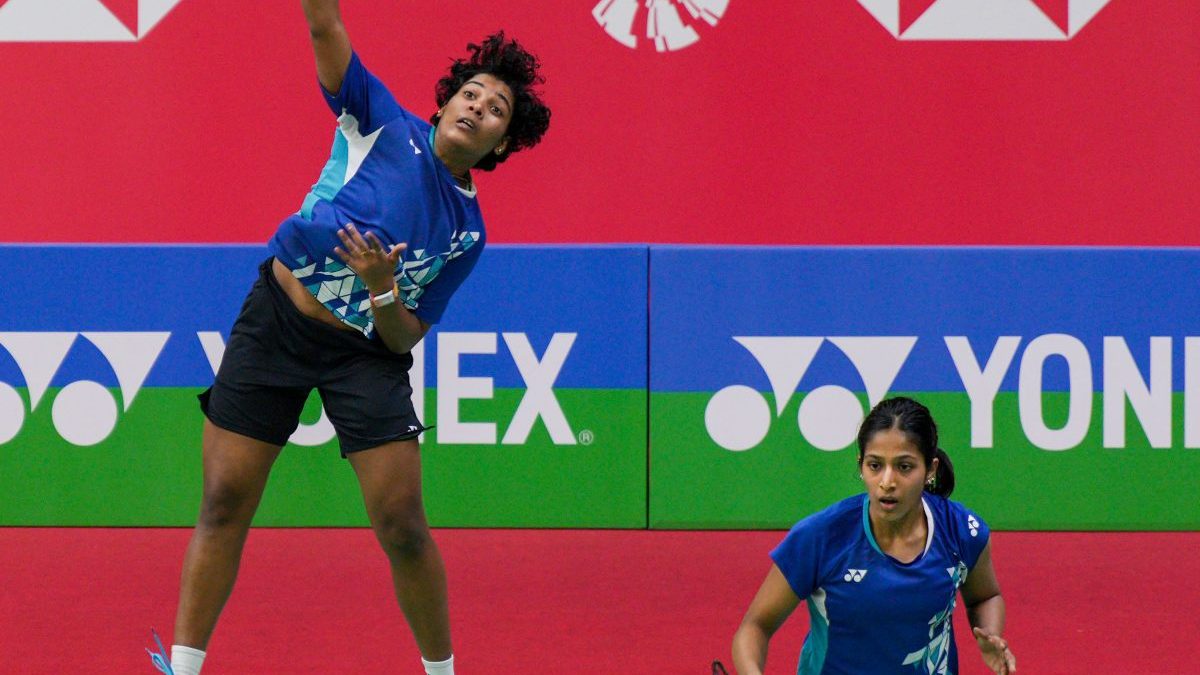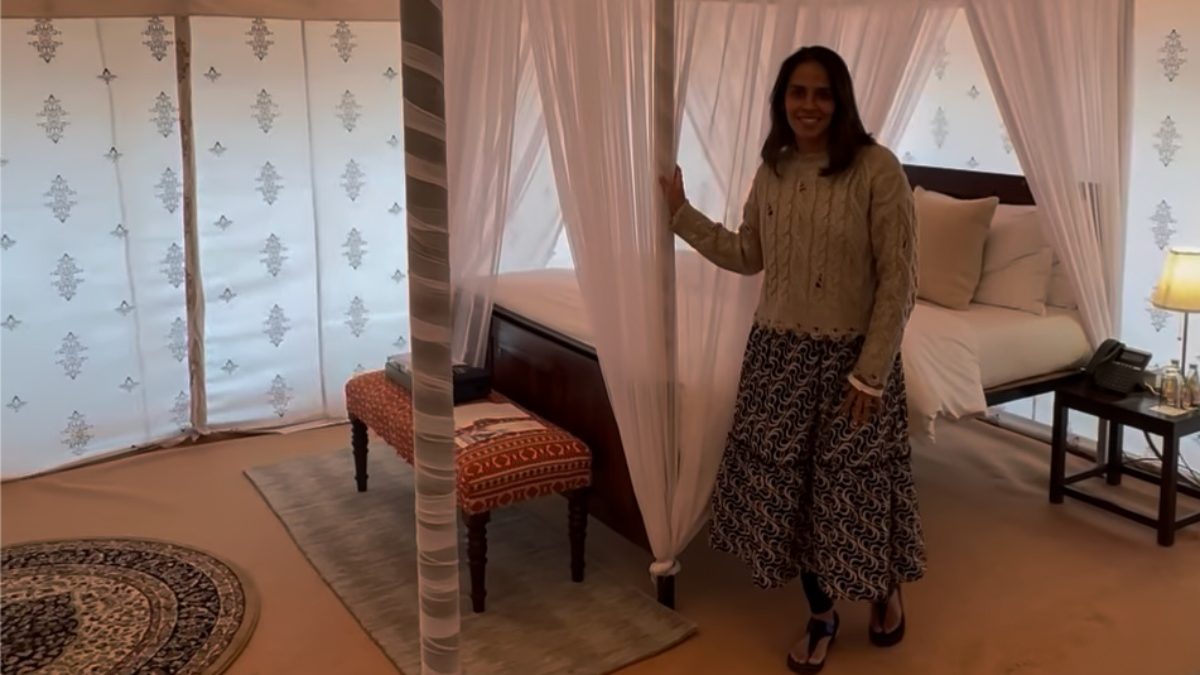This is the final piece of a five-part series on Indian badminton.
The Pullela Gopichand Academy in Gachibowli, Hyderabad makes a striking impression when you enter its gates – a full size football pitch capturing the shadow of the imposing building where India’s badminton stars are honed into world beaters. The grass and the inviting swimming pool alongside the ground bring out the colour in each other – and are in stark contrast to the hilly surroundings and the plain façade of the academy.
The size and the immaculate condition of the pitch is matched in grandeur only by the staircase leading towards the courts. Huge steps take you there – no slogans on the walls, no pictures – it’s very business-like. It’s practical. It’s Gopichand.
So why does a badminton academy need a football pitch you wonder? Training for badminton but using football, Sunil Gavaskar would have a few sleepless nights.
“When I need them to go out and run, football it is,” says Gopichand. “We move quickly in badminton but sometimes it’s good to go out and just run.”
But sometimes, just sometimes, the badminton stars enjoy their game of football so much that Gopichand needs to coax them all in. A break from the everyday monotony.
The academy is not just about teaching players how to move on the court and play their shots. It is about educating all these players; it is about drilling certain aspects of the game into their heads; it is about beating the best in the world.
Gopichand sees everything
“Maar, maar, maar, maar!” screams Pullela Gopichand as he flicks shuttlecocks in practice. His assistant coaches are doing the same drill on the adjoining courts, but the players there it seems, are making slightly less effort than that of those who’re getting trained by Gopichand himself.
Is it so? “Yes”, says trainee Sudhash Medsikar. “… maybe.”
Medsikar is not much of a talker – but when Gopichand’s walks away calmly towards his office, he opens up slightly. The 18-year-old, however, keeps a close eye on the large glass window separating the office and the courts. Gopi Sir sees everything.
For Rs 15,000 per month, the students get to stay at the academy. Food (one non-vegetarian and one vegetarian dish, roti, dal, chaawal) and internet is inclusive and so are the bright fluorescent Yonex kits and racquets – there’s also a Yonex store in the front of the building if you’re an impulsive shopper. The academy has a gym, a strength training and gymnastics room, a table-tennis room, a cafeteria, a swimming pool and facilities for ice-baths too.
If you’re an elite player and regularly represent India, staying at the academy is free. If you want to enroll, he’ll take your trials personally. Later in the day, Gopichand says, “I don’t pick up my phone half the time, fearing someone will ask for admission. We’re overbooked since a couple of years.”
No phones, not even for Saina
It’s the mid-day session, and Saina Nehwal, during a training break, reaches into her bag for her phone. Gopichand swoops down on her in a second – it’s all playful but the world No 4 has to keep her phone back into the bag.
“No Whatsapp, why do you have to check your phone?” said Gopichand. Saina knew that was coming but sometimes, it’s fun to break the rules.
The others tease her, Saina smiles meekly – failing to give an explanation for the breach of protocol and is back on the court in five minutes.
So elite or not – Gopichand checks everything here personally. He knows what you’re eating, where you’re going and has a checklist in his head as a training schedule. So is the schedule written down? “It’s all in my head, why do I need to write it down,” Gopichand taps his head while saying the last few words.
Apart from inside the rooms, there are cameras everywhere. Gopichand mentions in an earlier interview that he gives ‘certain leeway’ to senior players, but as far as the young ones are concerned, he has a good hold on their lifestyle.
Click here for Part-I — where we analyse Indian badminton’s biggest challenge — China. Click here for Part-II of the interview, which is on Gopichand’s search for the next Gopichand. Click here for Part-III , where we ask Gopichand to compare Saina Nehwal and PV Sindhu. Click here for Part IV , where PV Sindhu speaks on the challenges ahead of her
“We have to be back by 8.30.” What if you’re late? “Once or twice it’s fine, he will ask you why but if it happens too regularly…” Medsikar doesn’t explain further. He doesn’t need to.
“But he’s not that strict, come on…” says P Kashyap, world No 11, propped on a Swiss ball in the gym. “Maybe not with you,” says RMV Gurusaidutt, chuckling, sitting right next to him.
“Through the years he’s become like a friend is what I mean. I can go to him with any problem – be it personal or about my game,” explains Kashyap.
Controlled diet
Sai Praneeth (world No 40) is talking about the amount of protein he consumes and how Gopichand ensures the level of fitness – mental and physical by mixing up routines. One routine involves ‘if you don’t want to run, go play football’ and it also involves taking the whole academy out to dinner after a good performance.
In his hand is a snack – there’s no soda to go along. Mediskar’s words come rushing back to you: “Once a (we won’t name the company) soft drinks company approached sir – willing to sponsor the academy in exchange for placing a few vending machines. He refused. Soda’s not good for health, he says. He’s also strictly against alcohol or smoking.”
As Praneeth explains the procedure of entering players into tournaments, Gopichand enters the area and mockingly prepares to swat Praneeth.
“The snack,” Praneeth explains.
A well oiled machine
The manner is which Gopichand strides through the academy shows how proud he is of this setup. It’s like a well oiled machine, the rut of schedules and committed sessions punctuated by the occasional smile and nod of satisfaction from the man who prowls the area.
It may be a tall comparison, but Gopichand is like Alex Ferguson in many ways – the success level still nascent at this stage but he’s delivered an Olympic and a World Championship medal already. His word is law at the academy, and the fear is not instilled, it comes – after all, he once said, “If you want to be successful in a sport in India, forget about democracy.” Tough decisions cannot be avoided.
But he’s mellowed down it seems, “not really” is his answer to whether he deliberately scares people. At the same time, he acknowledges that he “gets away with a lot of things” thanks to his past reputation as a player.
However, ten years down the line when the likes of PV Sindhu – one of the gems of his academy – will be at the peak of her career (at 28 years) – no one will complain about how he did it.
They’ll only remember the big achievements – the medals and the laurels. And they’ll remember the little things – like Gopichand reporting to the academy at 4.15 AM and training players till 7 PM – that went into the making of this hugely successful academy.


)




)
)
)
)
)
)
)
)